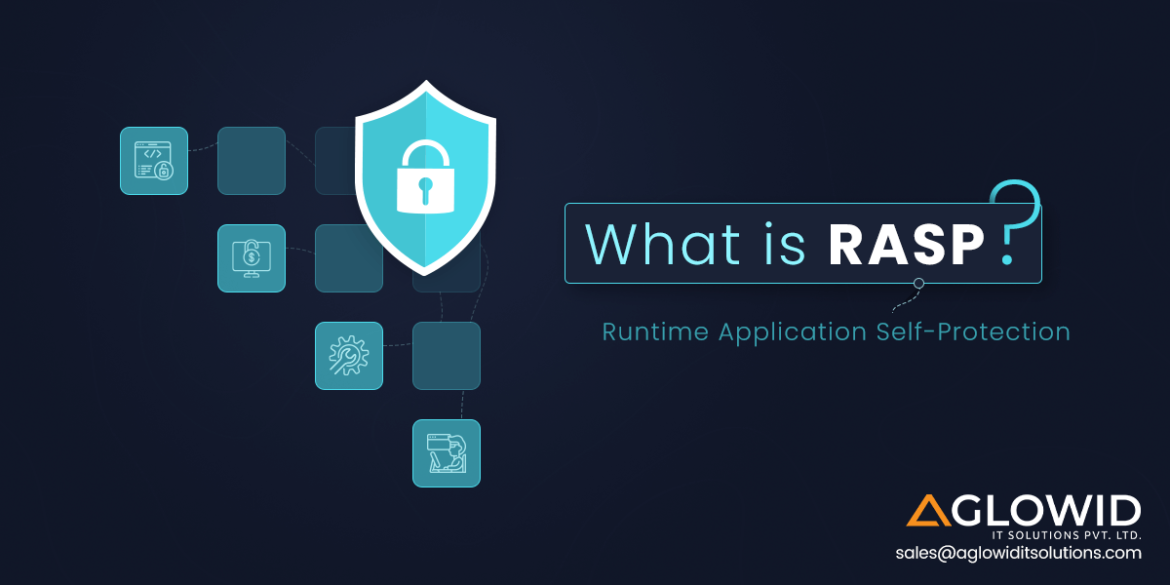Runtime Application Self-Protection (RASP): A Cutting-Edge Advancement in Application Security
Runtime application self-protection (RASP) represents a groundbreaking advancement in application security, specifically designed to counter runtime attacks targeted at the application layer of software. By offering enhanced visibility into concealed vulnerabilities, RASP acts as a security software that seamlessly integrates with an application or its runtime environment. Its primary function involves continuously intercepting calls to the application, and thoroughly assessing their security. Unlike traditional security measures, runtime application self-protection doesn’t passively wait for threats to affect the application. Instead, it takes a proactive approach, actively scanning incoming traffic to the application, and preemptively blocks any malicious calls from executing within the app.
How RASP Security Functions:
RASP technology operates as a server-based system that becomes active right from the start of the application runtime. It can be activated through two methods: integrating function calls within the app’s source code or applying an external layer to an already completed app, which activates RASP with a single command. While both methods are available, many developers prefer using trigger calls within the code base as it enables them to create a tailored security system that aligns precisely with their business requirements. This approach allows for the fine-tuning of protection parameters and optimizes runtime by avoiding unnecessary security checks.
The RASP layer operates in tandem with the application code, constantly observing incoming traffic directed towards the application’s server and APIs. As soon as any threat vectors are detected, RASP promptly deploys runtime protection measures to safeguard the application from malicious activities. All requests to the server undergo scrutiny through the RASP layer without causing any performance impact on the application.
RASP possesses robust capabilities that extend beyond merely detecting threat vectors, similar to a Web Application Firewall (WAF). It can take proactive actions to counteract potential damages that may occur if the threat is permitted to execute. Depending on the specific implementation, these actions could range from terminating a user session to dynamically analyzing runtime traffic and monitoring vulnerabilities to assess their impact on the application. Due to its proximity to the vulnerable code within the application, RASP minimizes false positives, resulting in more accurate threat identification.
Advantages of RASP Security
RASP technology offers numerous benefits, primarily stemming from its unique position within the application itself, rather than acting as an isolated network protection method like a firewall. This characteristic enables RASP to provide contextualized security services by leveraging information from the codebase, APIs, system configuration, runtime data, and logic flow.
Intelligent Penetration Testing:
It can be tailored to detect anomalies and respond accordingly, allowing for easy reprogramming and testing of various sections.
Smarter Incident Response:
With in-depth visibility into the application runtime and active security logging features, RASP enables faster and more informed incident response. Real-time data on application behaviour empowers developers to design more effective security measures.
Supports Compliance Development:
RASP technology not only provides security but also supports application development. In-depth testing and real-time data help identify key attack assets and vulnerabilities, resulting in more secure and compliant applications.
Added Layer of Protection:
Complementing existing WAF and IPS security setups, RASP acts as an additional layer of protection, enhancing security and reducing vulnerabilities. While the firewall guards against incoming threats, RASP proactively monitors the runtime and eliminates threats within the application.
Self-Protection:
After deployment, RASP functions as a standalone security system, autonomously identifying and mitigating threats with minimal human involvement. It creates a self-protecting application runtime, offering precise security events and runtime data.
Cost-Effective:
RASP provides a highly cost-effective solution, delivering comprehensive security without requiring extensive maintenance. Its low-maintenance nature safeguards applications from threats while providing valuable security event logs, analytics, and development benefits in a single package.
Enhanced Developer Training:
Incorporating developer training into your security team is crucial as it significantly minimizes vulnerabilities in application development. By actively leveraging RASP data, you can provide more accurate insights into vulnerabilities and susceptible areas within the application’s structure. This, in turn, fosters improved application security development in future projects.
Approaches to RASP Security
RASP has evolved as a well-established concept of in-app security, offering developers multiple approaches to neutralize threats. Depending on the developer’s preferences and the desired implementation of the RASP security layer in the application or server, they can choose from the following four methods:
Servlet Filters, SDKs, and Plugins:
This approach involves implementing servlet filters, SDKs, or plugins into platforms like Apache Tomcat or web servers to monitor and inspect incoming HTTP requests and data payloads before they reach the application code. Any potential vulnerabilities that resemble known threat patterns are blocked, and RASP takes appropriate corrective actions based on the chosen deployment mode.
Binary Instrumentation:
In this method, monitoring and control elements are built directly into the application code. The monitoring elements identify security events while the control elements record logs of such events and block them from causing harm.
JVM Replacement:
For applications developed using Java, this approach entails replacing the standard libraries (JAR or JVM) with a RASP layer. This RASP layer intercepts calls made to supporting libraries, applying security rules as necessary. By having an overall view of the application’s codebase and the system calls routing framework, RASP learns about the machine’s behaviour and sequence flows through passive monitoring of application calls.
Virtualization or Containerized Runtime Protection:
Using virtualization, also known as containerized runtime protection, a copy of the application is created. The application’s behaviour is instrumented at runtime on this copy using predefined rules that govern how the application is protected. RASP diligently observes and gains insights from the application’s code pathways, logical structures, parameterization, and generated outputs. This knowledge is then applied to incoming application requests, enabling RASP to distinguish between legitimate and malicious requests and respond with appropriate remedial actions.
Conclusion
RASP stands as an essential tool in the arsenal of application security, providing developers with advanced capabilities to detect, prevent, and respond to threats in real-time. By integrating rasp security technology, businesses can enhance the security posture of their applications, ensuring robust protection against evolving cyber threats in the dynamic digital landscape.




